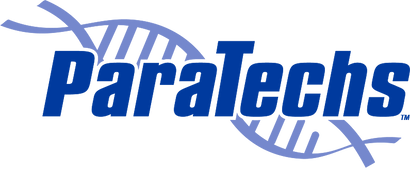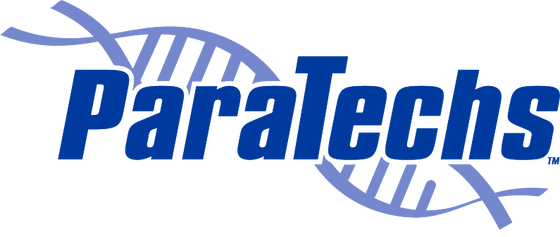VE-BEVS Transfer Vectors Resource Page
International shipments are subject to customs duties and taxes. The Recipient (Importer) of such goods is responsible for paying all related charges. Please read our Goods Customs Duties and Taxes Statement. [PDF]
pAcVE1 Transfer Vector Instructions
Description
ParaTechs’ pAcVE1 baculovirus transfer vector is designed for high level expression of foreign genes under the control of the Autographa californica nuclear polyhedrosis virus (AcMNPV) polyhedrin promoter. Increased recombinant protein production over conventional baculovirus transfer vectors is achieved by allowing co-expression of foreign genes with a vankyrin expression cassette (Fath-Goodin et al., 2006). pAcVE1 is derived from the pUC57 vector. Foreign genes may be cloned into the multiple cloning site utilizing the following restriction sites: AvrII; SbfI; XhoI; BglII; EagI; NotI; NheI. pAcVE1 baculovirus transfer vector is a polyhedrin locus-based transfer vector that is compatible with any baculovirus system that utilizes homologous recombination in insect cells, including flashBac (Oxford Expression Technologies) and Bac-N-Blue (Invitrogen).
Contents
The plasmid DNA was prepared on a silicon bead matrix and dissolved in TE buffer (10mM Tris-HCl, pH7.5; 1 mM EDTA). pAcVE1 baculovirus transfer vector is provided at 10 µg in 20 µl.
Storage
Transfer vector should be placed at -20°C for long- term storage.
Handling
For expression of recombinant protein under the polyhedrin promoter, the gene of interest should be ligated into an appropriate restriction site in the multiple cloning site of the pAcVE1 vector (see below). Transform the recombinant pAcVE1 transfer vector in E. coli cells (Top10 or any other suitable strain), propagate the cells under ampicillin selection and purify the recombinant plasmid using standard plasmid purification protocols. For construction of recombinant AcMNPV virus perform a co-transfection of the purified recombinant pAcVE1 vector with linearized baculovirus DNA suitable for homologous recombination in insect cells.
pAcVE1 Vector Map and Multiple Cloning Site
Click here to view the "pAcVE1 Vector Map and Multiple Cloning Site" image.
Unique Restriction Sites
AgeI AlwNI ApaI AscI AvrII BglII BsaAI Bsp120I BssHII BstAPI BstXI ClaI DraII EagI EcoNI EcoRI FspAI MscI NaeI NdeI Ngo MIV NheI NotI NruI PacI PfoI SbfI SgrAI SmaI SnaBI SpeI StyI SwaI XhoI XmaI
Absent Restriction Sites
AflII BclI BlpI BsiWI BstEII BstZ17I Bsu36I DraIII FseI MboI NcoI PflMI PmeI PmlI PpuMI PshAI RsrII SacII SanDI SexAI SfiI SgfI SrfI Tth111I XcmI
Click here to view the "Yellow Fluorescent Protein expression is enhanced when pAcVE1 is used to generate a vankyrin-enhanced baculovirus" image.
THIS PRODUCT IS INTENDED FOR RESEARCH PURPOSES ONLY
CAUTION: Not intended for human or animal diagnostic or therapeutic uses.
Limited Warranty
ParaTechs warrants that, at the time of shipment, the Product will conform to the specifications that accompany the Product. This warranty limits ParaTechs liability to replacement of the Product. PARATECHS MAKES NO OTHER WARRANTIES, EXPRESSED OR IMPLIED, WITH RESPECT TO THE PRODUCT; INCLUDING ANY WARRANTIES OF MERCHANTABILITY OR FITNESS FOR ANY PARTICULAR PURPOSE OR THAT THE PRODUCT DOES NOT INFRINGE ANY PROPRIETARY RIGHTS OF ANY THIRD PARTY.
pAcVE.02 Transfer Vector Instructions
Description
pAcVE.02 is a Vankyrin-Enhanced (VE) baculovirus transfer vector designed for high levels of recombinant gene expression under the control of the Autographa californica nucleopolyhedro virus (AcMNPV) polyhedrin promoter. pAcVE.02 is derived from pUC57 and contains the pUC origin of replication and the ampicillin resistance gene for propagation and selection in bacteria. pAcVE.02 is designed for the direct secretion of recombinant proteins utilizing the honeybee melittin signal sequence (Tessier et al., 1991). An N-terminal 8xHis-tag is provided for ease of purification. Cloning into pAcVE.02 requires the DNA insert to be in frame with the N-terminal 8xHis tag. Foreign genes may be cloned into the multiple cloning site utilizing the following restriction sites: NotI; SbfI and NheI. PmeI can be used if a C-terminal 8xHis-tag instead of the N-terminal His-tag is required or if the His-tag is not desired. Increased recombinant protein production over conventional baculovirus transfer vectors is achieved by the co-expression of the gene of interest with a vankyrin expression cassette (Fath-Goodin et al., 2006). pAcVE.02 contains ORF 603 and ORF1629 sequences and allows recombination with the viral DNA for insertion into the polyhedrin locus. The baculovirus transfer vector is compatible with any baculovirus system that utilizes homologous recombination in insect cells, including flashBAC (Oxford Expression Technologies) and Bac-N-Blue (Invitrogen).
Contents
The plasmid DNA is dissolved in TE buffer (10mM Tris-HCl, 1 mM EDTA pH7.5). pAcVE.02 baculovirus transfer vector is provided at 10µg in 50µl.
Storage
The transfer vector should be placed at -20º C for long-term storage.
Handling
For expression of recombinant protein under the polyhedrin promoter, the gene of interest should be ligated into an appropriate restriction site in the multiple cloning site of the pAcVE.02 vector and should be in frame with the N-terminal His-tag (see diagram). Transform the recombinant pAcVE.02 transfer vector in E. coli cells (DH5α, Top10 or any other suitable strain), propagate the cells under ampicillin selection and purify the recombinant plasmid using standard plasmid purification protocols. For construction of recombinant AcMNPV perform a co-transfection of the purified recombinant pAcVE.02 vector with linearized baculovirus DNA suitable for homologous recombination in insect cells.
pAcVE.02 Vector Map and Multiple Cloning Site
Click here to view the "pAcVE.02 Vector Map and Multiple Cloning Site" image.
Unique Restriction Sites
AgeI AleI AlwNI ApaI AvaI AvrII BamHI BbvCI BclI BmgBI BmtI BplI BpmI Bpu10I BsaAI BsaBI BseRI BseYI BspMI BstAPI BstBI BstXI EagI Eco53kI EcoNI EcoRI HindIII HpaI KpnI NaeI NdeI NgoMIV NheI NotI NruI PciI PfoI PmeI PpuMI PspOMI SacI SapI SbfI SgrAI SmaI SnaBI SpeI SphI StuI StyI SwaI XbaI XmaI
Absent Restriction Sites
AscI AsiSI BglII BlpI BsiWI BspEI BssHII BstEII BstZ17I Bsu36I BtgI DraIII FseI FspAI MscI NcoI PflMI PmlI PshAI RsrII SacII SanDI SexAI SfiI Tth111I XcmI XhoI
Click here to view the "Secreted alkaline phosphatase (SEAP) activity is enhanced when expressed from pAcVE.01" image.
THIS PRODUCT IS INTENDED FOR RESEARCH PURPOSES ONLY
CAUTION: Not intended for human or animal diagnostic or therapeutic uses.
Limited Warranty
ParaTechs warrants that, at the time of shipment, the Product will conform to the specifications that accompany the Product. This warranty limits ParaTechs liability to replacement of the Product. PARATECHS MAKES NO OTHER WARRANTIES, EXPRESS OR IMPLIED, WITH RESPECT TO THE PRODUCT; INCLUDING ANY WARRANTIES OF MERCHANTABILITY OR FITNESS FOR ANY PARTICULAR PURPOSE OR THAT THE PRODUCT DOES NOT INFRINGE ANY PROPRIETARY RIGHTS OF ANY THIRD PARTY.
pAcVE.03 Transfer Vector Instructions
Description
pAcVE.03 is a Vankyrin-Enhanced (VE) baculovirus transfer vector designed for high levels of recombinant gene expression under the control of the Autographa californica nucleopolyhedro virus (AcMNPV) polyhedrin promoter. pAcVE.03 is derived from pUC57 and contains the pUC origin of replication and the ampicillin resistance gene for propagation and selection in bacteria. pAcVE.03 is designed for the direct secretion of recombinant proteins utilizing the honeybee melittin signal sequence (Tessier et al., 1991). An optional C-terminal 6xHis-tag is provided for ease of purification. Cloning into pAcVE.03 requires the DNA insert to be in frame with the honeybee melittin signal sequence. Foreign genes may be cloned into the multiple cloning site utilizing the following restriction sites: NcoI; SbfI; XhoI; BstZ17I; BglII; SacII and EagI. Increased recombinant protein production over conventional baculovirus transfer vectors is achieved by the co-expression of the gene of interest with a vankyrin expression cassette (Fath-Goodin et al., 2006). pAcVE.03 contains ORF 603 and ORF1629 sequences and allows recombination with the viral DNA for insertion into the polyhedrin locus. The baculovirus transfer vector is compatible with any baculovirus system that utilizes homologous recombination in insect cells, including flashBAC (Oxford Expression Technologies) and Bac-N-Blue (Invitrogen).
Contents
The plasmid DNA is dissolved in TE buffer (10mM Tris-HCl, 1 mM EDTA pH7.5). pAcVE.03 baculovirus transfer vector is provided at 10 µg in 50 µl.
Storage
The transfer vector should be placed at -20º C for long-term storage.
Handling
For expression of recombinant protein under the polyhedrin promoter, the gene of interest should be ligated into an appropriate restriction site in the multiple cloning site of the pAcVE.03 vector and should be in frame with the honey bee melittin signal sequence and the C-terminal 6xHis-tag if desired (see diagram and table). In that instance the stop codon needs to be omitted. Transform the recombinant pAcVE.03 transfer vector in E. coli cells (DH5α, Top10 or any other suitable strain), propagate the cells under ampicillin selection and purify the recombinant plasmid using standard plasmid purification protocols. For construction of recombinant AcMNPV perform a co-transfection of the purified recombinant pAcVE.03 vector with linearized baculovirus DNA suitable for homologous recombination in insect cells.
pAcVE.03 Vector Map and Multiple Cloning Site
Click here to view the "pAcVE.03 Vector Map and Multiple Cloning Site" image.
Restriction Enzymes Suitable for In-Frame Cloning
Click here to view the "Restriction Enzymes Suitable for In-Frame Cloning" image.
Unique Restriction Sites
AgeI AleI AlwNI ApaI AvrII BamHI BbvCI BclI BglII BmgBI BplI BpmI Bpu10I BsaAI BsaBI BseRI BseYI BstAPI BstXI BstZ17I EagI Eco53kI EcoNI EcoRI HindIII HpaI KpnI NaeI NcoI NdeI NgoMIV NotI NruI PciI PfoI PpuMI PspOMI SacI SacII SapI SbfI SgrAI SmaI SnaBI SpeI SphI StuI SwaI XbaI XhoI XmaI
Absent Restriction Sites
AscI AsiSI BlpI BmtI BsiWI BspEI BspMI BssHII BstEII Bsu36I DraIII FseI FspAI MscI NheI PflMI PmeI PmlI PshAI RsrII SanDI SexAI SfiI Tth111I XcmI
Click here to view the "Erythropoietin (EPO) production is enhanced when expressed from pAcVE.03" image.
THIS PRODUCT IS INTENDED FOR RESEARCH PURPOSES ONLY
CAUTION: Not intended for human or animal diagnostic or therapeutic uses.
Limited Warranty
ParaTechs warrants that, at the time of shipment, the Product will conform to the specifications that accompany the Product. This warranty limits ParaTechs liability to replacement of the Product. PARATECHS MAKES NO OTHER WARRANTIES, EXPRESS OR IMPLIED, WITH RESPECT TO THE PRODUCT; INCLUDING ANY WARRANTIES OF MERCHANTABILITY OR FITNESS FOR ANY PARTICULAR PURPOSE OR THAT THE PRODUCT DOES NOT INFRINGE ANY PROPRIETARY RIGHTS OF ANY THIRD PARTY.
VE-BEVS Publications
Fath-Goodin A, Kroemer JA, Webb BA (2009). The Campoletis sonorensis ichnovirus vankyrin protein P-vank-1 inhibits apoptosis in insect Sf9 cells. Insect Mol Biol. 18(4):497-506. PMID: 19453763. https://pubmed.ncbi.nlm.nih.gov/19453763/
Fath-Goodin A, Kroemer J, Martin S, Reeves K, Webb BA (2006). Polydnavirus genes that enhance the baculovirus expression vector system. Adv Virus Res. 68:75-90. Review. PMID: 16997009. https://pubmed.ncbi.nlm.nih.gov/16997009/
Kroemer JA, Webb BA (2006). Divergences in protein activity and cellular localization within the Campoletis sonorensis Ichnovirus Vankyrin family. J Virol. 80(24): 12219-28. PMID: 1700565. https://pubmed.ncbi.nlm.nih.gov/17005654/
VE-BEVS Presentations
Steele K, oral presentation entitled “Expression of mammalian glycoproteins and other difficult to express proteins with the vankyrin-enhanced baculovirus expression system.” Presented during PEGS: The Essential Protein Engineering Summit, Boston, MA, May 6, 2014. [PDF]
Steele K, poster presentation entitled “End the poor protein yield crisis by delaying cell lysis: new baculovirus transfer vectors encoding the anti-apoptotic vankyrin protein.” Presented during the International Society for BioProcess Technology, 4th Spring meeting, Washington D.C., March 12, 2014
Oral presentation entitled “Function and Versatility of Vankyrin Gene-Mediated Enhancement of Baculovirus Expression Vector Protein Production” at ISBiotech 2nd Annual Meeting “Baculovirus Expression Technology”, Rosslyn, VA, April 2-5, 2012
Poster presentation entitled “Log-Scale Improvement in Protein Yield with Vankyrin-Enhanced Transfer Vector” at the Cambridge Healthtech Institute “Baculovirus Technology” conference, Boston, MA, August 22-23, 2011 [PDF]
Oral presentation entitled “Expanding the Utility of Viral Ankyrin Genes in Baculoviruses” at the Wilbio 12th International Conference on Baculovirus and Insect Cell Culture, San Antonia, TX, February 2-4, 2009
Oral presentation entitled “Improved Recombinant Protein Production by ParaTechs’ Vankyrin-Enhanced Baculovirus Expression Technology” ” at the Cambridge Healthtech Institute “Baculovirus Technology” conference, Boston, MA, August 2008
Poster presentation entitled “Enhanced Recombinant Protein Production by ParaTechs’ Vankyrin Enhanced Baculovirus Expression Technology” at the Wilbio 11th International Conference on Baculovirus and Insect Cell Culture, Seattle, WA, February 25-27, 2008 [PDF]





